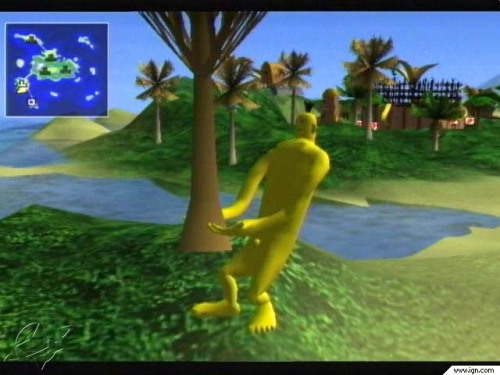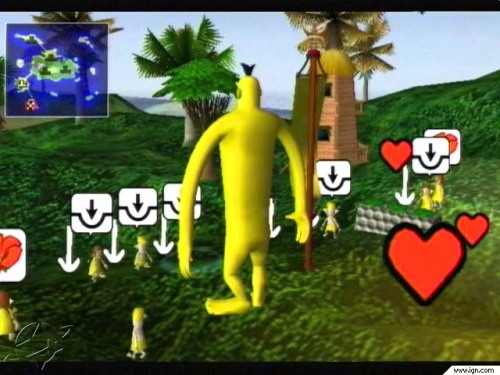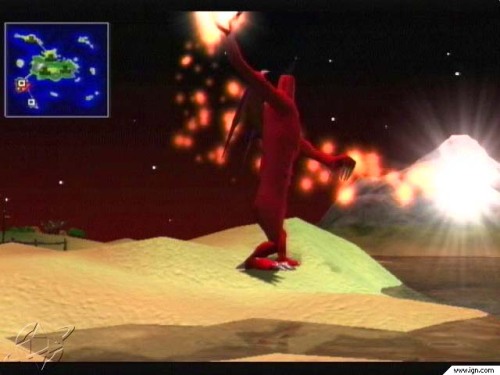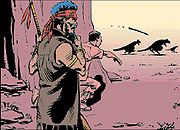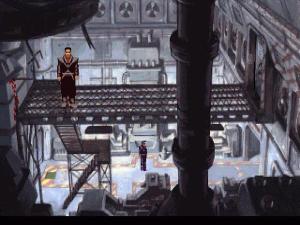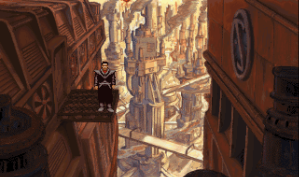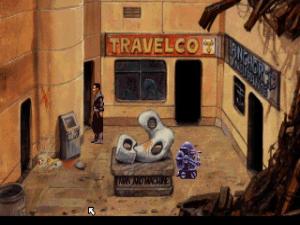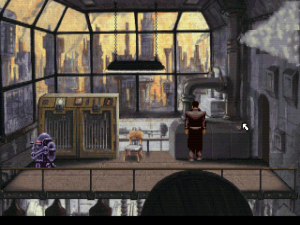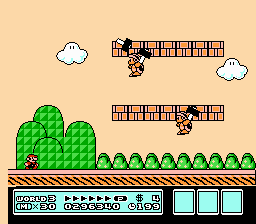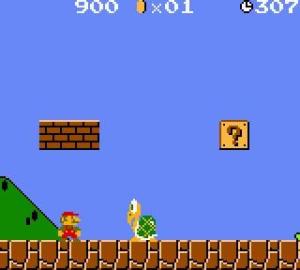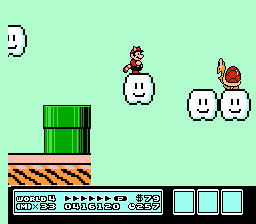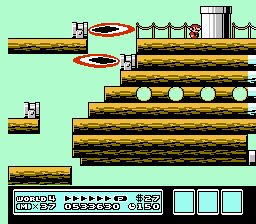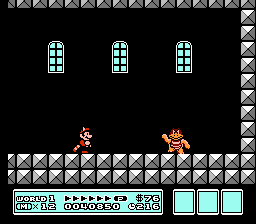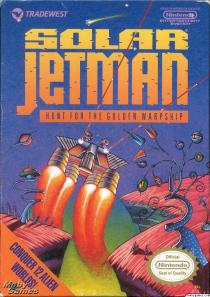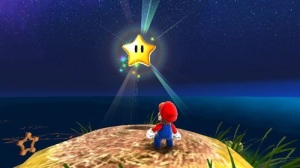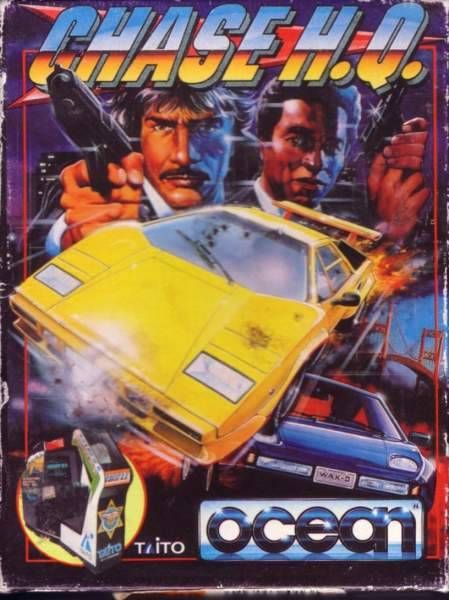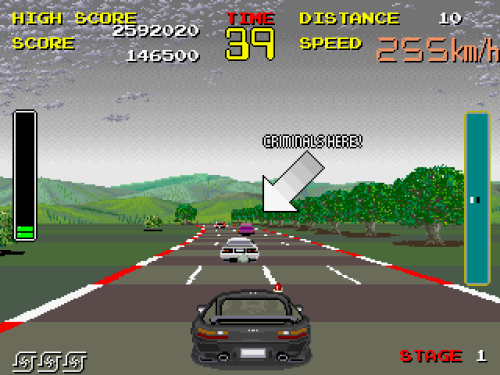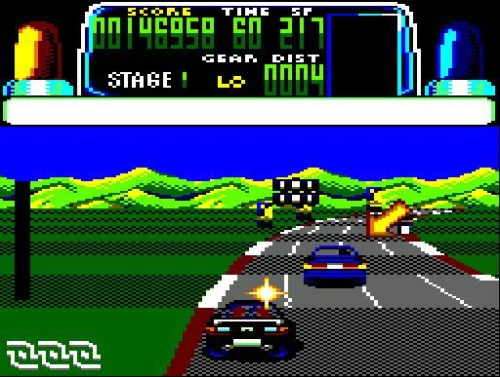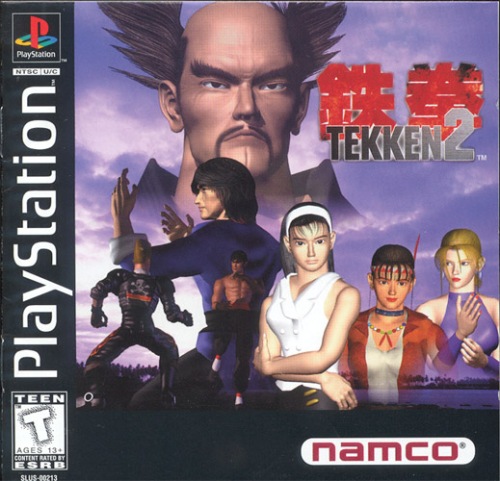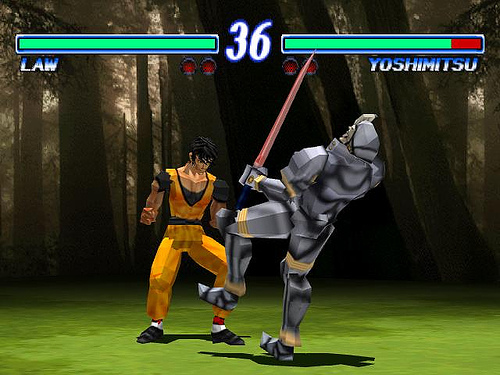Format: Coin-Op/Playstation Genre: Light Gun Game Released: 1995/1997 Developer: Namco
There’s a simple reason that Time Crisis made my life slightly better – if, in the event of some sort of apocalypse, I was forced into the position where I would need to defend my homestead against invasion, the lightning-quick sharp-shooting skills I learned from this game will surely be more than enough to repel any maruading zombies/aliens/angry Belgians. My acquired ability to pick off multiple foes in quick succession, punctuated by brief dives for cover, will undoubtedly serve me well in any situation where I am required to return small arms fire whilst conserving ammunition – basically, if there’s only one gun in the bunker and the men in blue suits are hammering down the door, just leave it to me. Job done.
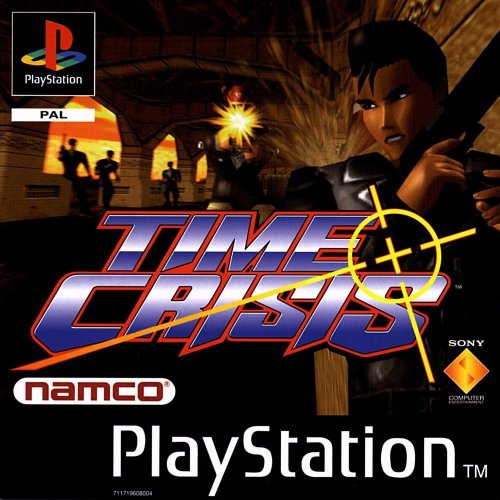
There really is nothing quite like gunning down a small army of colour-coded international terrorists to brighten up your day. Despite the constant repetition, I never seem to tire of this game; in fact, knowing exactly where and when every single little hapless blue guy will pop out is almost comforting. It’s a warm familarity, like a dog-eared, stain-covered, favourite jacket for which each stain has its own personal story.

I’m going to stick my geek hat on here (it’s the one with the flappy ear muffs) and tell you the extent of the misplaced devotion I have given to this game. Several years ago now – back in the days when I thought mobile phones were gimmicky and unnecessary – I spent around six months studying at Barcelona University. Otherwise starved of my computer game fix, I used to pop into the local arcade on the way to uni, although being a skint student, I limited myself to one credit – which always went into the Time Crisis coin-op. After several months of toil, sweat and frustration (well, mainly frustration), I finally managed to beat the game on one credit – the only time I’ve ever managed to finish an arcade game in one go. Beaming from ear to ear, I wallowed luxuriously in my enormous sense of achievement, then turned away from the machine with a cocksure smirk to drink in the awed looks and rapturous applause from my admiring audience – which consisted solely of the fat, moustachioed arcade owner, who was sat reading a porn magazine in the corner and who didn’t take a blind bit of notice of me.
Such is the life of the arcade gamer [sigh].

I suppose that’s one of the most melancholy aspects of playing video games – you put hours and hours of tireless devotion into honing your skills and learning every nuance and technique the game has to offer, but in the end the only people you’re going to impress are other, equally devoted (obsessed?) gamers. It kind of adds a trickle of ennui to the whole proceedings – which turns into a flood once you realise that the arcade owner is more interested in tits than your gaming prowess.
Which is fair enough I suppose.
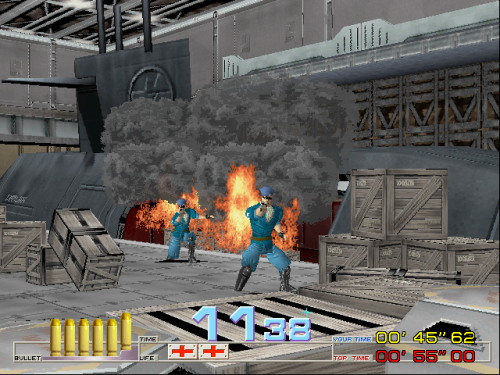
Nevertheless, I continued to devote hours of practice to the home version of Time Crisis after I returned from Spain, despite the knowledge that, like all video games, all this tireless devotion would ultimately be for nought.
Unless, that is, the Belgians invade. In which case I would be able to proudly hold my head up high and say that this game, this single, mighty game, was my inspiration for taking on the entire Belgian Empire single-handedly with nothing but an automatic pistol. Perhaps, when it’s all over and I’m being triumphantly carried through the jubilant streets of a liberated London, I’ll look up and notice that Spanish arcade owner in the crowd; lip quivering, he’ll slowly raise a salute in my honour as ‘Red Hot Senoritas’ slips from his grubby fingers, only to be trampled by the exaltant crowd.
At last, justification for my video game obses… erm, devotion.
Lewis
(Note: The screenshots in this post are taken from the arcade version of Time Crisis. All screenshots are from the excellent Arcade History website: http://www.arcade-history.com/.)


